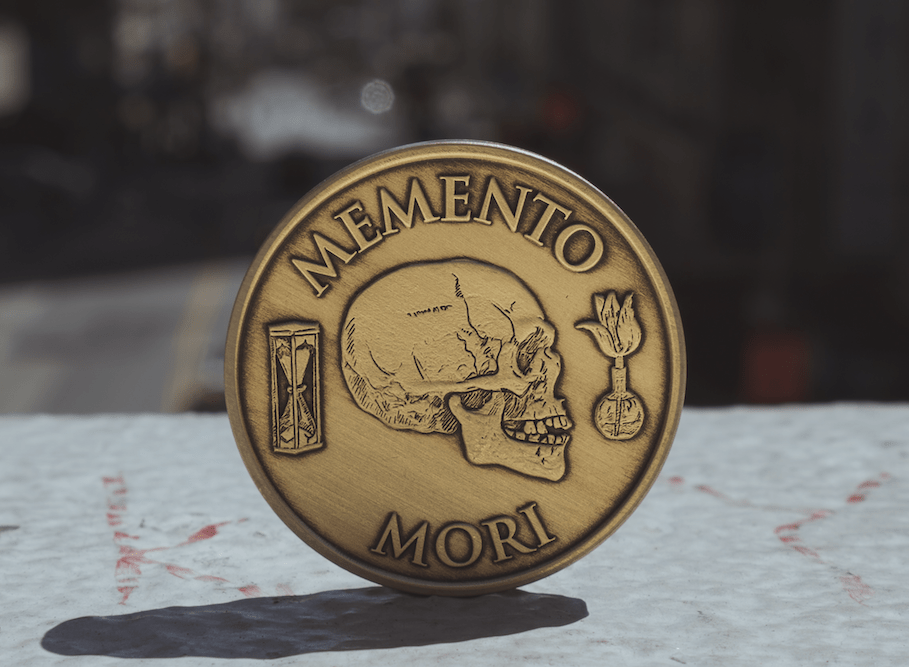Death is a great equalizer of humankind. It does not differentiate between rich or poor, young or old, etc. It is the ultimate truth, but we usually do not feel comfortable talking about it. This hesitancy is because we take life for granted sometimes and are not very exposed to the meaning of death.
The Latin phrase ‘Memento Mori’ symbolizes the meaning of life’s end. It is not a negative term. It explains the inevitability of death, and we should accept the truth to live life to the fullest. This article will define the ‘Memento Mori’, its history, contemporary presence with real-life examples, and more.
Definition of ‘Memento Mori’?
The literal meaning of the Latin phrase is ‘Remember you must die.’ The words ‘Memento’ means ‘to remember’ and ‘Mori’ means ‘death’. According to Lexico, ‘’ Memento mori is an article kept as a cue for the inevitability of death, such as a skull.’’
This reminder of death is not to promote or morbid fear but to motivate, clarify, and inspire. It gives an awakening and encourages you to live life in your best capacity. The Latin phrase has been central to philosophy, art, literature, and more throughout annals of time.
As Socrates says in Plato’s Phaedo, ‘’The one aim of those who practice philosophy in the proper manner is to practice for dying and death.’’(Phaedo 64a 3-4)
Origin and Popularity
According to historical sources, the origin of the ‘Memento Mori’ can be traced back to the later half of the 16th century. The phrase became popular during the Medieval period about judgment day. People started using this category of symbolism and imagery for their music, art, and cultural expressions. It gradually became part of ornaments and decorations.
History of ‘Memento Mori’
Civilizations have interpreted death in their own manner, according to beliefs and events through fabrics of history. We will discuss the history of this Latin phrase in some of the prominent cultures of humankind and how they used the term Memento Mori.
Ancient Roman
Memento mori is believed to have begun during Roman civilization. During Ancient Rome, triumphant military generals parade on their chariots drawn by four horses on the streets amidst cheering of the crowd. It was much like an idolization by the people for their general. But right behind the leader, a slave kept whose sole responsibility was to whisper in his ears continuously through the day, ‘’Respice post te. Hominen te esse memento. Memento mori’’. It means ‘’Look behind. Remember that you are mortal. Remember you must die’’.
A tradition originated the phrase as a symbolic reminder of the final day of judgment day.
Ancient Egypt
The Great Pyramids of Giza stands as the symbol of memento mori. It shows Ancient Egyptians were believers in the philosophy behind death. Pyramids show their respect for a deceased and unique manner to remember them forever.
Medieval Europe
Medieval Europe experienced millions of deaths during Black Death, several famines, wars, etc. People were feeling closer to death, which led to the prominent use of ‘Memento Mori’ in contemporary art and culture. You can observe dancing snakes, skeletons, and corpses in the artworks, tombs, and iconography of medieval times across European countries.
Awareness about death has been emphasized in Buddhism also. There is a meditative practice called maranasati which means ‘’awareness of death’’. Buddha said, ‘’Of all the footprints, that of the elephant is supreme. Similarly, of all mindfulness meditation, that of death is supreme’’.
How to put ‘Memento Mori’ into practice?
There is no single formula to put memento mori into practice. It depends upon your behavior, acceptance of death as the supreme truth, and being ready to make changes in your regular life to live a satisfying life.
Some quick tips for applying the concept of ‘remember you will die’ into practice;
- The future is uncertain and full of surprises. There is no fixed time or age for death. It will be wiser if you plan now, make a wish list and share with family & friends.
- Break the communication gap with loved ones. Talk about life, death, and everything in-between.
- Once this fear of death goes away, you start living life at the moment. You feel confident about sharing anything with loved ones. The fear of death and an unpredictable future goes away.
Types of Memento Mori Keepsakes with Real-life Examples
Memento Mori keepsakes have entered the mainstream. People are talking about death, buying or gifting objects as a reminder of the ‘Judgement Day.
Let’s go through some of the prominent forms of Memento Mori keepsakes;
Tattoo
It refers to any symbol or depiction that reminds of death and human mortality. It includes hourglasses, skeletons, skulls, grim reapers, etc.
Charms
It has become a trend these days to carry memento mori charms in the form of chains, coin purses, etc.
Artwork
Art is always the form of all types of communication. There has been widespread use of the memento mori theme from medieval to contemporary artwork.
Rings
The most popular item is the reminder of death. People buy these on e-commerce marketplaces these days, such as Etsy.
Acceptance Through Death
Memento Mori encourages us to celebrate life with loved ones. From Steve Jobs to Christopher Nolan, people are talking about the ultimate truth, and we should embrace it to get rid of fear from our souls forever.




